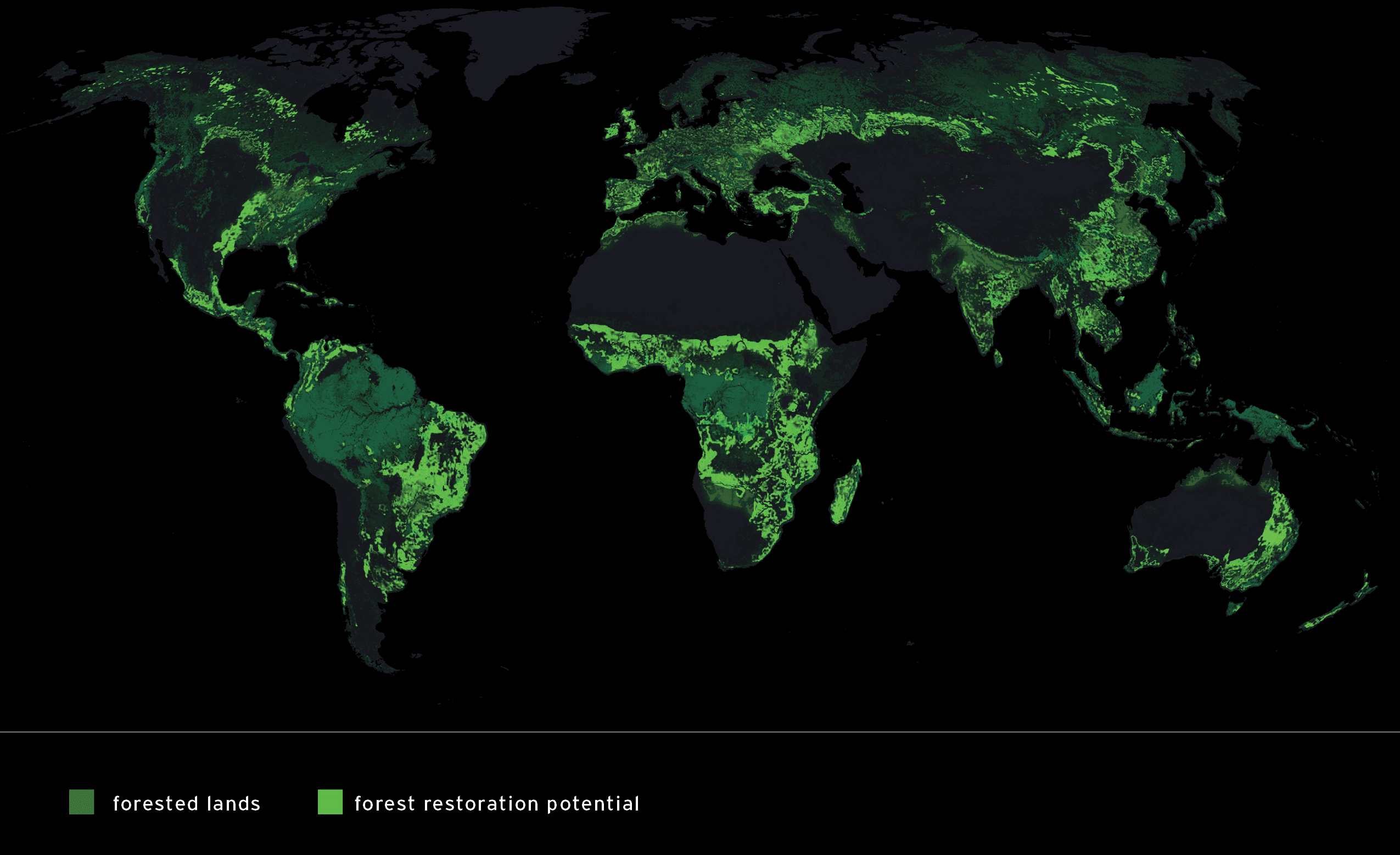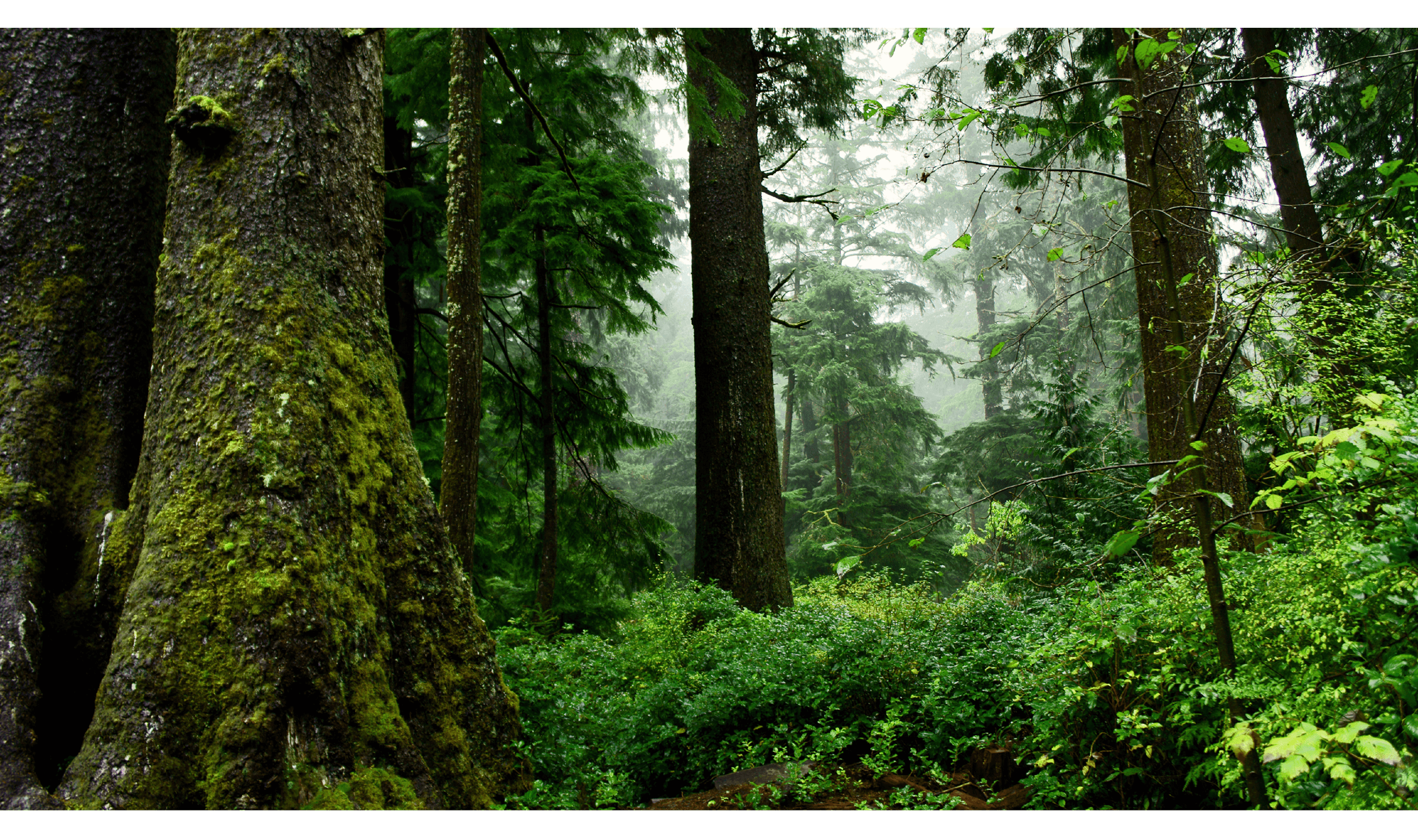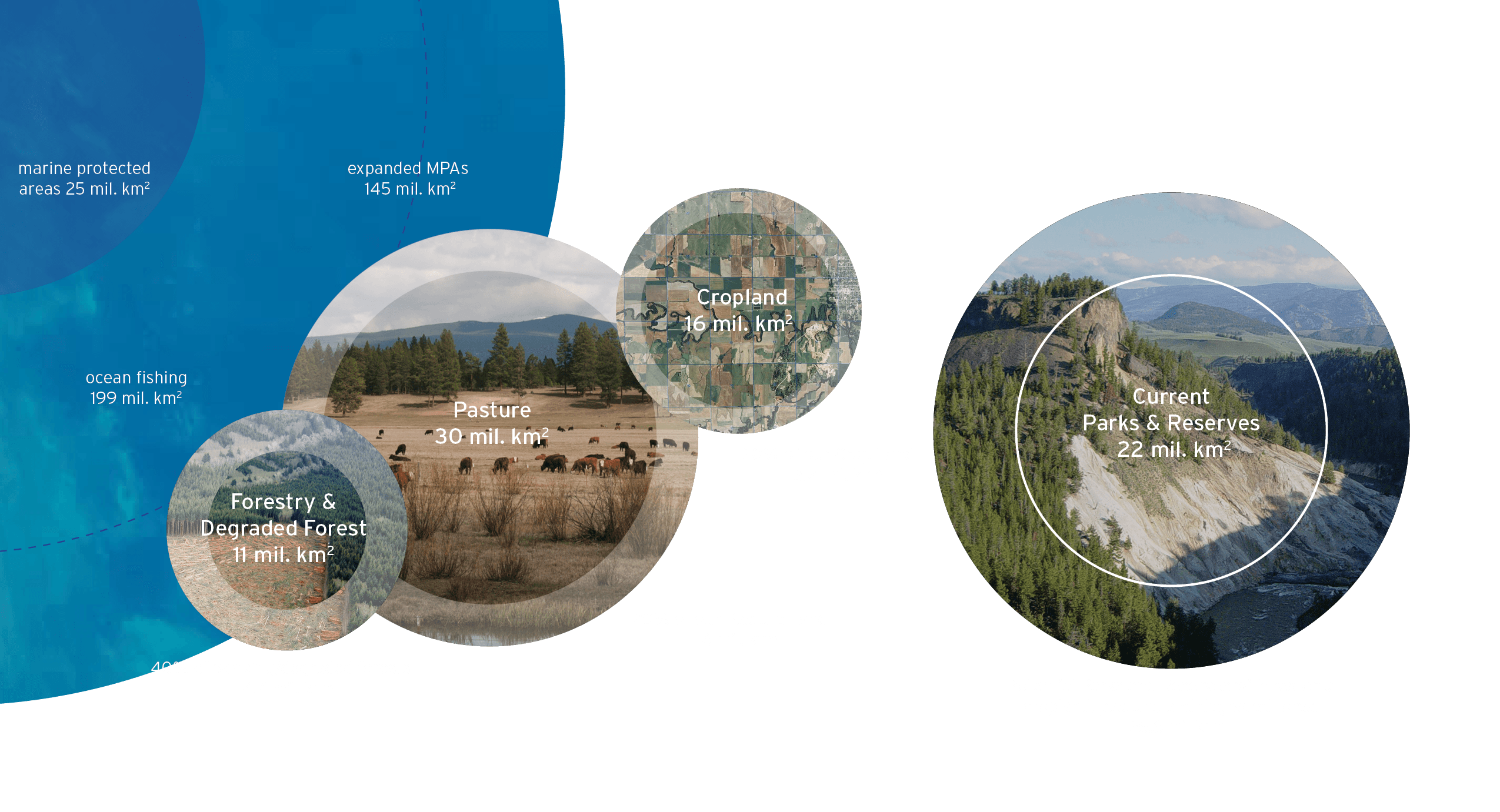Restore forests worldwide

OVER 30% OF GLOBAL FORESTS HAVE BEEN CLEARED. ONLY 36% OF THE AREA REMAINING IS PRIMARY OLD GROWTH.
Wide scale restoration could absorb 10-20% of annual greenhouse gas emissions and increase forest area by over 35%.
map sources: current forest cover: forest height, NASA. | forest restoration potential: Atlas of Forest Landscape Restoration Opportunities. World Resources Institute. | emissions reductions and offsets potential based on estimates from Project Drawdown, World Resources Institute, The Nature Conservancy and Griscom et al. Natural Climate Solutions. PNAS (2017)

WHAT IF WE RESTORED FORESTS AROUND THE WORLD?
“Intact forests... sequester twice as much carbon as planted monocultures... Peatlands, tundra, mangroves and ancient grasslands are also important carbon storehouses...”
Restoration and conservation could help offset emissions by 15-50% and preserve the most biodiverse places on the planet.
Source: “The Global Deal For Nature” Dinerstein et al. 2019. Image Source: David Patte/U.S. Fish and Wildlife Service. Offsets: estimated range compiled from Project Drawdown, “Natural Climate Solutions,” “Importance of Food Demand Management for Climate Mitigation” Bajzelj et al. 2014.
Potential Restoration Areas Worldwide

"RESTORATION... IS SEEN AS PIVOTAL TO LIMITING BOTH CLIMATE CHANGE AND SPECIES EXTINCTION."
"Of 2,870 million hectares of converted lands... worldwide... 54% were originally forests, 25% grasslands, 14% shrublands, 4% arid lands and 2% wetlands."
"Restoring 15% of converted lands in priority areas could avoid 60% of expected extinctions while sequestering 299 gigatonnes of CO2—30% of the total CO2 increase in the atmosphere since the Industrial Revolution..."
Sources: Strassburg et al. Global priority areas for ecosystem restoration. Nature. (2020). map is a composite illustration highlighting converted grassland and forest areas which are partially available for restoration after closing yield gaps in agricultural lands. all wetland areas are shown. sources include. Strassburg et al. Global Priority Areas for Ecosystem Restoration. Nature. (2020); Atlas of Forest Landscape Restoration Opportunities. World Resource Institute (2014).
WHAT IF WE COULD GIVE LAND BACK TO NATURE?

By improving our agricultural and grazing practices, and by sustainably fishing and farming the ocean, we could feed more people, reduce carbon emissions, give land back to nature, increasing our parks and reserves by over 50%.
Source: Eric Sanderson, “The Human Footprint”
Next solution



Learn about Maya Lin’s fifth and final memorial: a multi-platform science based artwork that presents an ecological history of our world - past, present, and future.

Discover ecological histories and stories of former abundance, loss, and recovery on the map of memory.

Learn how we can reduce our emissions and protect and restore species and habitats – around the world.

See how art can help us rethink the problems we face, and give us hope that each one of us can make a difference.

Help make a global memorial something personal and close to home. Share your stories of the natural world.